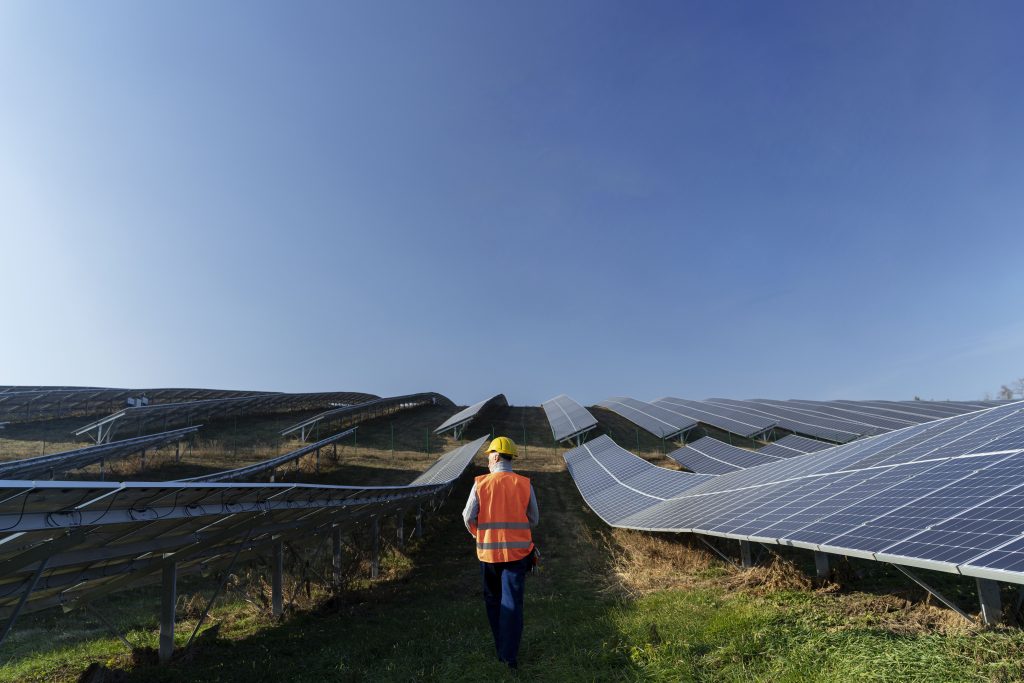In India, agriculture transcends mere occupation; it embodies a lifestyle for countless individuals. With a profound agricultural heritage, the nation has historically relied on conventional techniques for crop cultivation and livestock management. Nevertheless, as the population expands and climate change alters weather conditions, there is an increasing necessity to implement more sustainable agricultural technologies. This is where solar energy plays a crucial role. Solar Innovations in Agriculture are revolutionizing farming by improving energy efficiency, reducing costs, and promoting sustainable practices.
This article will examine the transformative impact of solar energy on Indian agriculture and the advantages farmers are reaping from solar-powered irrigation systems, agrivoltaics, and various other solar-driven advancements.
1. Solar-Powered Irrigation Systems
A primary challenge confronting Indian farmers is the availability of dependable water sources for irrigation. In numerous rural regions, farmers depend on diesel-powered pumps or erratic electricity supplies to extract water from wells or rivers. These alternatives can be costly, environmentally detrimental, and unreliable, particularly during crucial planting and growing periods.
Solar-powered irrigation systems present a cleaner and more dependable solution. These systems utilize solar panels to operate water pumps, enabling farmers to irrigate their crops without reliance on diesel or grid electricity. Given that India enjoys abundant sunlight for the majority of the year, solar-powered pumps represent a practical approach to reducing expenses and enhancing energy efficiency in agriculture.
Benefits of solar-powered irrigation systems:
Reduced operational costs:
Farmers can save money by eliminating the need for diesel or electricity for water pumping. This is especially helpful for small-scale farmers who may have limited resources.
Environmental impact:
Solar pumps produce zero emissions, making them an eco-friendly alternative to diesel pumps, which release harmful pollutants into the air.
Reliability:
Solar-powered pumps can function even in remote areas without access to electricity, providing a reliable and sustainable water source for irrigation.
2. Agrivoltaics: Combining Agriculture and Solar Energy
A relatively new development in the application of solar energy in the agricultural industry is known as agrivoltaics, which involves the use of the same land for farming and solar power production. In other words, it entails fixing solar panels on farmland in such a way that they do not hinder the growth of plants on the surface. This method allows farmers to generate electricity and at the same time grow crops on their farms. The concept of agrivoltaics is that the solar panels can be placed in a manner that allows some light to fall on the crops, thus providing shade that can be beneficial to some crops by reducing water evaporation and protecting them from scorching heat. In some cases, the use of solar panels may even be beneficial to the crops as it creates a more controlled environment. Agrivoltaics is of great importance in India, where land resources are limited. It enables farmers to fully utilize the land in producing food and at the same time producing renewable energy. The electricity generated from these solar installations can be used on the farm for purposes such as irrigation or other uses or can be fed into the grid and thus provide farmers with an extra source of income.
3. Solar-Powered Cold Storage Solutions
One of the major issues that Indian farmers encounter is the lack of adequate numbers of cold storage. Most crops especially fruits and vegetables are highly perishable immediately after harvest due to limited post-harvest handling facilities. This leads to high post-harvest losses and economic burdens to the farmers and other stakeholders. Solar-powered cold storage systems offer a possible solution to this problem. These systems use solar power to run the refrigeration systems and help farmers store their produce for longer durations. Farmers can reduce post-harvest losses, get better prices for their produce, and increase their profits by preserving the freshness of their produce. These cold storage solutions are particularly beneficial in rural areas where the availability of reliable electricity is a challenge.
4. Solar Dryers for Crop Preservation
In addition to cold storage, solar technology is being used for crop drying. Traditionally, farmers in India dry crops like grains, fruits, and vegetables by laying them out in the sun. While this method is cost-effective, it exposes the crops to dust, pests, and bad weather, leading to losses in quality and quantity.
Solar dryers offer a more efficient and hygienic way to dry crops. These systems use solar energy to create controlled drying environments, ensuring that crops are dried evenly and free from contamination. Farmers can preserve their produce for longer periods, reduce waste, and improve the quality of the dried goods they sell.
5. Economic and Environmental Benefits of Solar Farming
Solar innovations in agriculture are not just a change in technology but a change for the better, for the environment and for farmers. The advantages of solar in farming are not only in the form of cost reduction and energy conservation. Solar technology makes farmers more independent, decreases their impact on the environment, and assists in fighting climate change. Solar systems help in the reduction of the use of fossil fuels and other conventional energy sources hence making the environment cleaner. They also conform to India’s long-term renewable energy targets, which seek to enhance the utilization of clean energy to address climate change impacts. Also, the use of solar energy provides farmers with an opportunity to have other sources of income. Farmers can also sell any surplus electricity produced by the solar panels back to the utility company, which provides additional income that can be used to enhance the farming business or to feed their families.
6. Challenges and Future Prospects
However, there are still some issues that need to be addressed when it comes to solar energy. The first challenge is the cost of installing solar systems, especially for small-scale farmers. However, with government incentives and subsidies, the use of solar innovations in agriculture is gradually gaining ground. However, there is a need to educate and create awareness of sustainable farming technologies. Some farmers may not even know about the possibility of using solar energy or how to incorporate it into their farming. This gap can be closed by training programs and support from agricultural and renewable energy specialists.
Conclusion
The future of agriculture in India is sustainable and solar innovations in agriculture are an important component of this future. These technologies include solar water pumps, solar pumps for irrigation, agrivoltaism, and solar dryers, which are revolutionizing farming practices, food preservation, and energy consumption. The use of solar energy will help farmers in India improve their yields, cut expenses, and make the world a better place.




